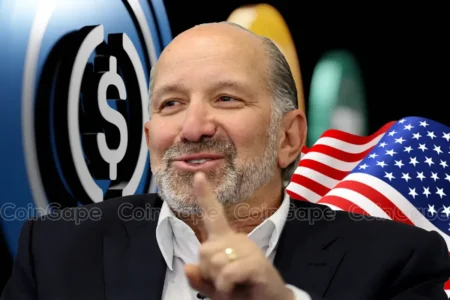The Bitcoin futures market offers valuable insights into market behavior, particularly when analyzing open interest and volume across different exchanges. A recent analysis based on CoinGlass data reveals significant disparities in open interest and trading volume among major centralized exchanges. For example, CME leads in open interest with $16.72 billion, followed by Binance, Bybit, Gate.io, and Coinbase with varying levels of open interest. However, when it comes to 24-hour trading volume, Binance surpasses CME, with Bybit, Coinbase, and Gate.io following suit.
One key question that arises from these variations is why certain exchanges with smaller open interest pools are able to generate significantly higher trading volumes. The volume-to-open-interest ratio provides a quantifiable measure of the frequency of trading relative to outstanding positions. In the case of CME, the ratio of 0.69 suggests that daily volume lags behind open interest, indicating a market where positions are held rather than actively traded. Conversely, Binance records a ratio of 1.28, signifying active position turnover as volume exceeds open interest.
Different contract specifications play a role in shaping these trading patterns. While CME offers standard and Micro Bitcoin futures with certain contract values, Binance, Bybit, and Gate.io standardize their contracts differently. Coinbase’s Nano Bitcoin futures, with lower capital requirements, contribute to its outsized trading volume relative to open interest. These differences are driven by the composition of traders on each exchange and the characteristics of the platforms they operate on.
The behavior of retail traders on exchanges like Binance and Coinbase, who engage in short-term strategies and settle positions rapidly, contributes to the high trading volumes seen on these platforms. Leverage options on Binance and Coinbase further amplify trading volume, as traders can take larger positions with limited capital. In contrast, institutions and corporations on CME tend to favor longer-term holdings within a regulated framework, which reflects in their lower turnover ratios and preference for stability over speculative trading.
The structure of each exchange, including the presence of funding rates on perpetual futures and different contract expiry cycles, also influences the discrepancy between open interest and trading volume. While exchanges like Binance may see volume spikes due to elevated funding rates, exchanges like Coinbase may have trading patterns tied to contract expiries. Leverage options on exchanges like Binance, Bybit, and Gate.io play a role in boosting trading volume by allowing positions to exceed capital bases, though this can limit open interest growth on these platforms.
Overall, the disparities in Bitcoin futures open interest and trading volume across exchanges indicate distinct trading profiles shaped by the composition of traders, leverage options, contract specifications, and exchange structures. Understanding these differences can help traders and investors navigate the Bitcoin futures market more effectively and make informed decisions based on the behavior of participants on different platforms.

















